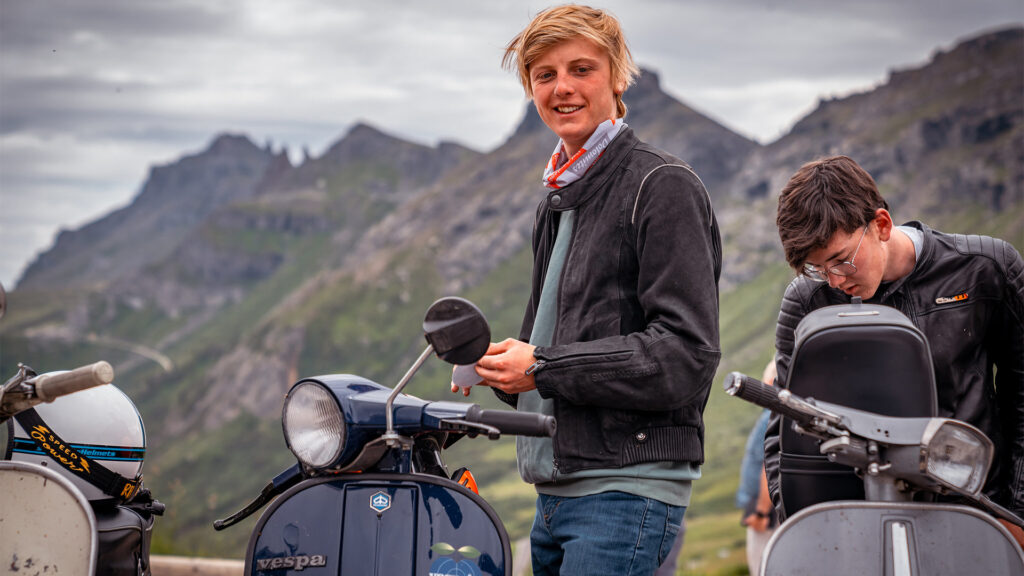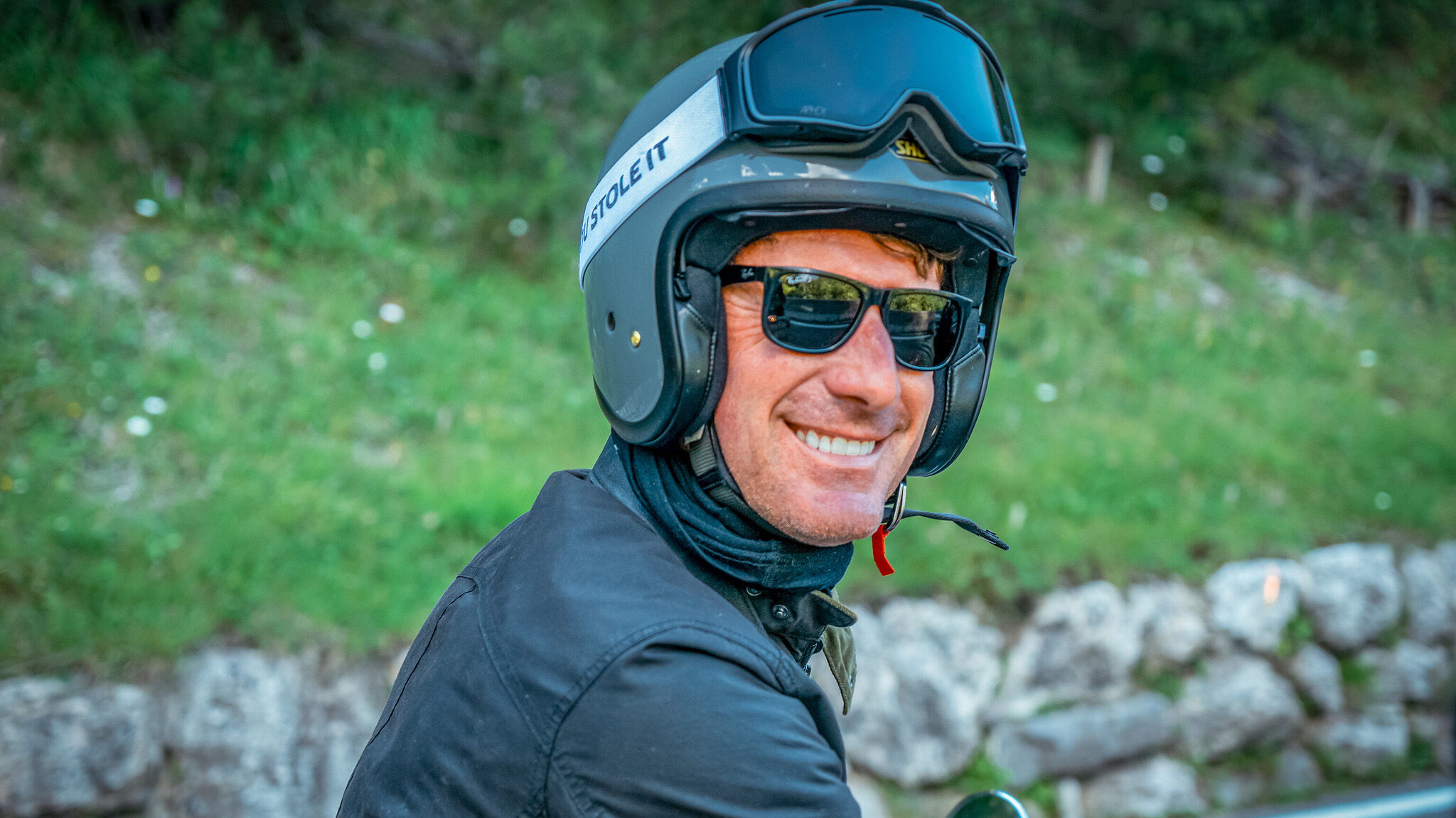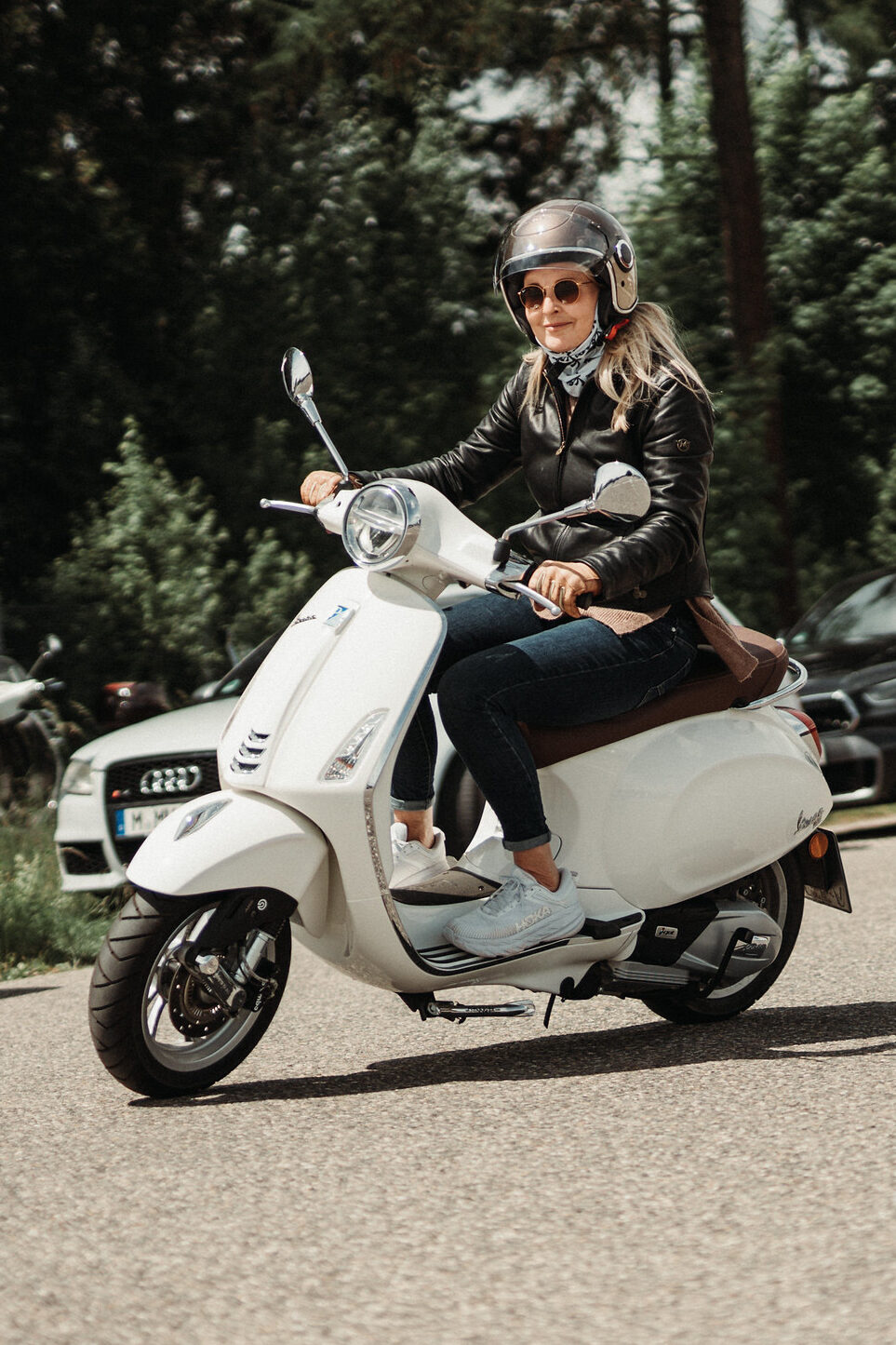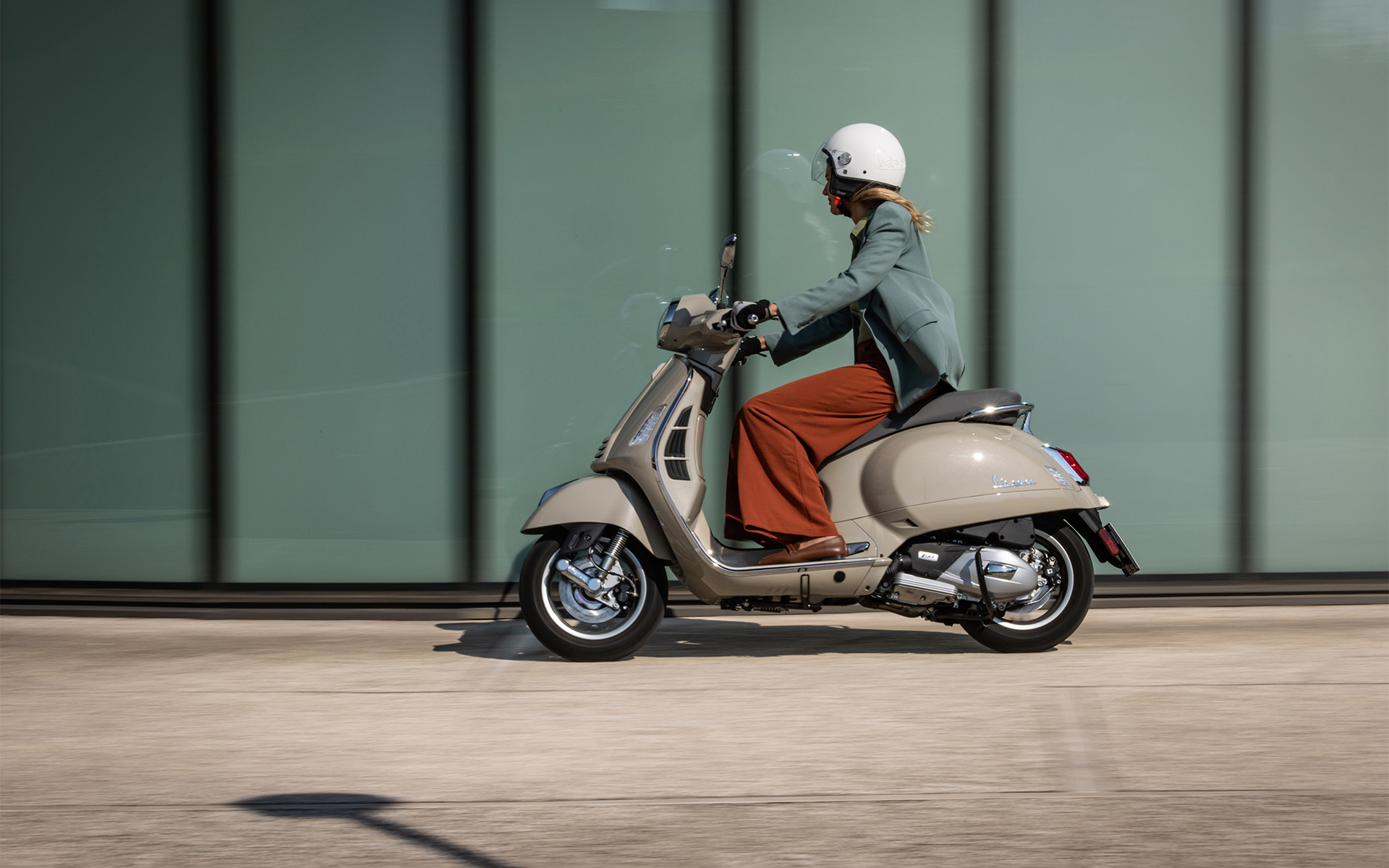The new Vespa is ready for a first ride. As a beginner, our hearts are pounding and we’d like to take off right away. Is it just like that? No, absolutely not.
What needs to be considered before we jump into traffic? Here are some tips for drivers:
Legalities of riding a scooter
We need a valid driver’s license. More info here: The right driving license to ride a Vespa
We need a valid insurance. More details here: The right insurance coverage for the Vespa
Now you’re ready to go? No way. We are responsible and first familiarize ourselves with the operation of our scooter.
No-go: Playing with various switches while driving without knowing their function.

Controls
At the beginning, the many buttons, switches and levers may still be a bit confusing. But with a little practice, this is quickly learned.
Handlebar right side
- Brake lever and throttle grip
- Mode (menu setting)
- Emergency stop switch red (also called dead man or kill switch), on models GT, GTL, GTS, from 125 cc to 300 cc
Tip: Use switch only in case of emergency (emergency ⇒ for example a fall, rider is buried under the scooter, engine is still running) - Do not switch off the scooter regularly via this button, error memory would fill up quickly and cause malfunctions.
- Start button
- Cover for cooling water connection
- Glove compartment
- Space for important tools
All necessary and helpful tools as well as aids can be purchased with confidence at SIP Scootershop.
Handlebar left side
- Brake cable drum brake rear, or clutch lever for gear shift, depending on model (see manual)
- Switch high beam on/off (low beam automatically ON after start)
- switch turn signal left/right
- left under handlebars button to open seat,
Tip: first close glove box, then open seat (risk of damage) - in glove compartment: USB connection, coupled to ignition
- Cable for emergency unlocking of the bench seat
- cable for separate charger
Extra tip:
Do not attach ignition key and remote control to the same key ring. If the key case accidentally ends up in the seat, we can’t get it open. The rust-brown master key is needed, which no Vespisti carries.

Practical knowledge for getting started
The filler neck for the tank is located in the seat.
Important steps and explanations can be found in the following article: Refueling the Vespa properly: This is how it’s done!
Tip from practice:
Do not engage the locking lever of the fuel nozzle, but keep it in your hand and monitor the refueling process. The relatively small tank fills up quickly. When the nozzle is locked, spilling of the fuel cannot be prevented. The small drain hole is not able to catch all the spilled fuel.
Check oil level and coolant
An oil change is due for the first time at the check-up after approx. 10,000 km (depending on driving style), at the latest after 2 years.
Follow the manufacturer’s maintenance schedule.
To check the coolant level, place the scooter on the main stand.
Unscrew the cover below the handlebar on the top case (one screw). Ideally, read the level of the cooling water from the (milky) transparent container when the engine is lukewarm – cold (if difficult to see, rock the scooter gently).
Caution: When the engine is hot, the cooling water is also hot. There is a risk of burns. Only top up the cooling water when the engine has cooled down.
Are we finally ready to drive?
No, not yet. As beginners, we have no idea how to steer the vehicle safely through traffic.
Practice riding a scooter
- wear suitable clothing (long trousers, sturdy shoes, jacket and gloves)
- never ride without helmet on, bicycle helmet is not allowed
- use a quiet side street or traffic training area
- Practice braking and cornering in peace and quiet
Tips for correct cornering
- mentally adjust to the curve as early as possible
- Reduce speed
- support cornering technique:
Apply slight pressure to the right or left handlebars to lean slightly in the direction of the curve (a driving lesson/driving school would be useful for practicing this). - do not brake in the curve if possible
- Slowly accelerate at the apex (inner edge of the curve), eyes on the outer edge of the curve

Tips for correct braking behavior
- drive with foresight, adjust speed before traffic lights and curves
- Heavy braking causes wear of the brake pads. On downhill slopes, it is better to brake hard for a short time than long and continuously, use the engine as a decelerator (downshift gears).
- brake more strongly at the rear than at the front (weight of pilot causes the two-wheeler to move forward), possible fall over the steering wheel if the front brake is used too strongly
Emergency braking: apply both brakes (hand and foot pedal brakes, depending on model) forcefully at the same time.
General riding tips for beginners
- in contrast to cycling, ride a scooter as far as possible in the middle of the lane. This makes dangerous overtaking maneuvers of other road users more difficult
- keep an eye on the rear view mirror while driving
- parking scooters on the sidewalk is not allowed
- weaving through a traffic light all the way to the front is not allowed
- Scooter should be run in comfortably for the first approx. 500 km, max. 80% of the maximum speed (pistons and cylinders grind in)
- Driving lesson in the driving school can not hurt (deepening tips on braking and cornering)
Before we start
For both possible starting options (electronically by start button or kickstarter), the same specifications must be observed:
- Vehicle is on main stand
- Ignition key in ON position
- Emergency stop switch in OFF position
- Side stand is folded up
- Operate brake lever until brake light is illuminated
- Start engine
For us Vespisti, safety on the road is paramount, so driving is fun for a long time!
We need a valid driver’s license and the correct insurance certificate. Here it is important to have the right papers with you and always check them for validity.
It is always important to familiarize yourself with the controls of the scooter. On the right side are important the brake lever, the throttle, the start button and the glove box. On the left side is the brake cable for the rear wheel, lights and turn signals, as well as the opening of the seat
General practice of driving style is very important, braking and cornering should be tested in a quiet environment for safety. Technical knowledge: The filler neck for the tank is located in the seat. Learn how to check the oil level and the cooling water.




I live in Thailand. I have a Vespa with a 300 cc engine. Now I have a problem. The car starts and runs for less than 1 minute. The engine shuts down and then won’t start. I have to turn the key off and on again. Sometimes it takes The kickstand goes up and down and starts so it turns on and can run for a bit and then turns off again like this. Now I want to know what’s wrong with the engine oil, the battery oil is complete and not lacking any defects. Please tell me how to fix it.
Hello there, unfortunately I can’t help with this specific problem. But maybe someone from the community, might be able to help:)
Kind regards
Anna Vespamag Team